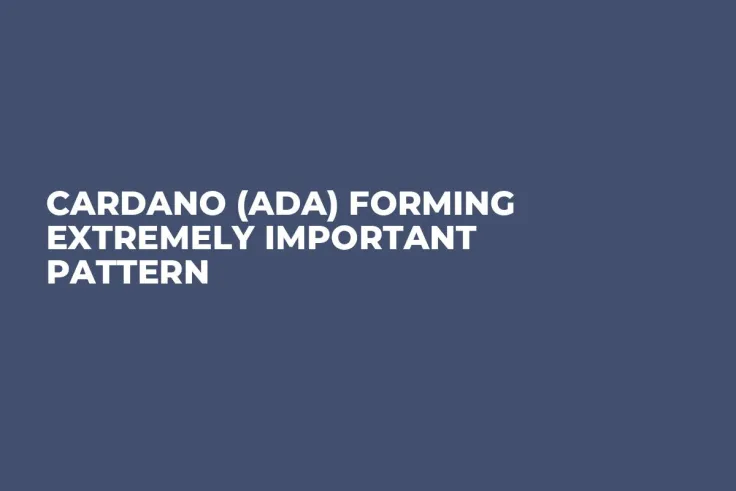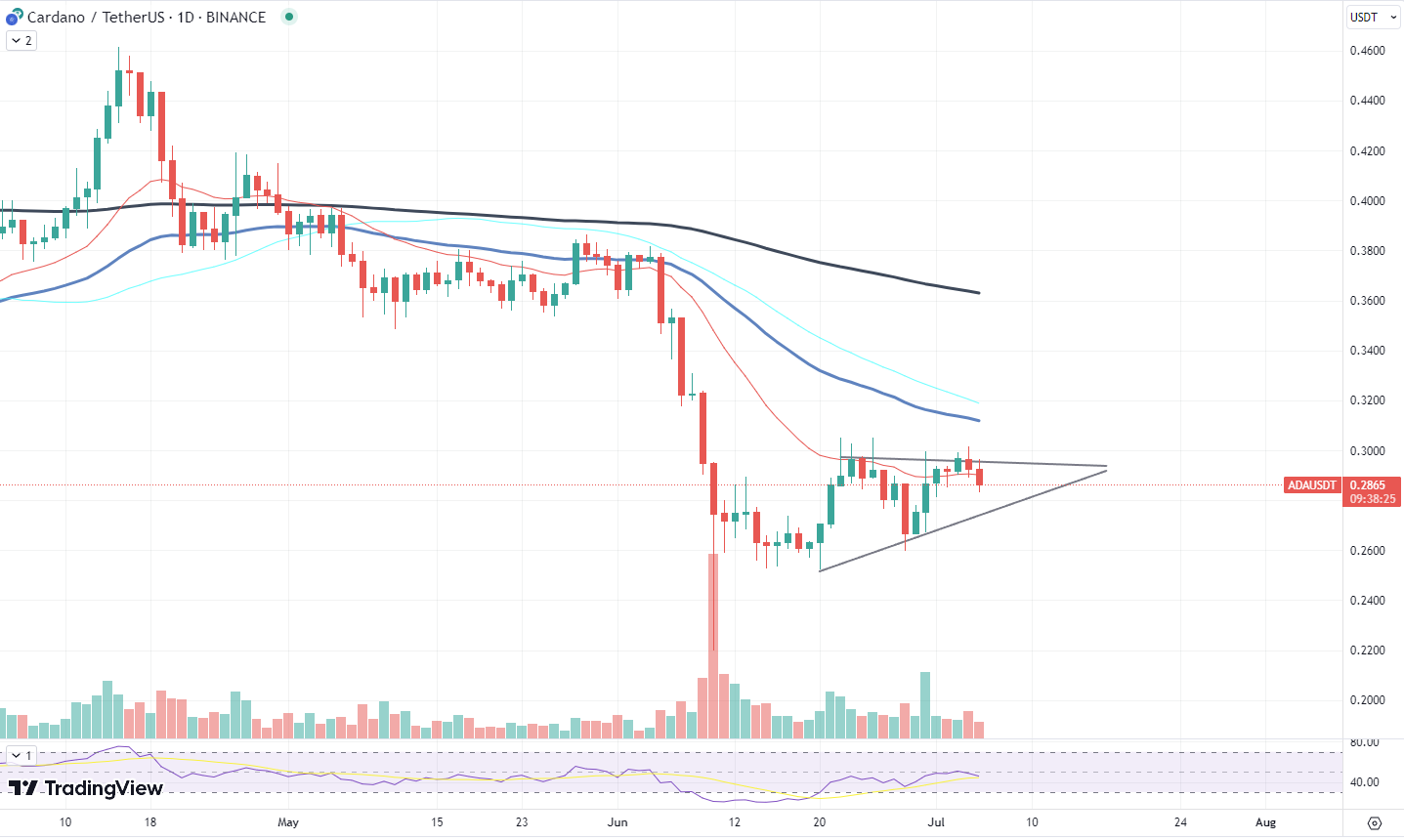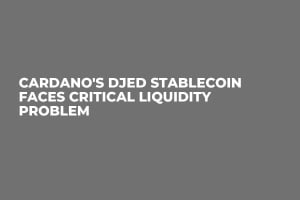
Disclaimer: The opinions expressed by our writers are their own and do not represent the views of U.Today. The financial and market information provided on U.Today is intended for informational purposes only. U.Today is not liable for any financial losses incurred while trading cryptocurrencies. Conduct your own research by contacting financial experts before making any investment decisions. We believe that all content is accurate as of the date of publication, but certain offers mentioned may no longer be available.
Cardano (ADA), the innovative blockchain platform, is attracting investor attention with its chart reflecting an essential technical pattern: the ascending triangle. This pattern is known for its bullish implications and could be an indicator of a potential upward breakout.
An ascending triangle forms when the price of an asset creates higher lows and hits the same resistance level multiple times. This signals a battle between buyers and sellers, with buyers pushing the price higher while sellers resist at a certain level. The pattern completes when the price breaks through the resistance, suggesting an upcoming surge.

Cardano's price has been forming higher lows, demonstrating increasing buying pressure. On the other side, the horizontal line of resistance indicates strong selling pressure at a certain price level. The point where these two lines converge forms the apex of the triangle, and it is usually around this area that a breakout occurs.
This pattern's emergence comes at a time when Cardano's network is experiencing growth in the DeFi sector, reflected in its rising Total Value Locked (TVL). This growth is indicative of Cardano's potential to carve a significant niche in the rapidly evolving DeFi space.
However, despite the positive on-chain metrics and bullish chart pattern, it is important to note that Cardano still has a long way to go to reach the scale of larger networks like Ethereum. Yet, the combination of the ascending triangle pattern, increasing DeFi activity and overall positive market sentiment could suggest an imminent price rally for ADA.
XRP aim for reversal
The most recent legal developments around XRP strengthens its position on the cryptocurrency market last month. However, the lack of traction around it in July and lack of volatility put XRP to sleep, making investors uninterested in providing inflows to the top-tier digital asset.
As of now, XRP is trading at around $0.48. It has been operating within a falling wedge formation, a chart pattern frequently identified in the technical analysis landscape. This formation is usually considered a bullish pattern, indicating potential price reversals after a downward trend. The falling wedge is formed when the price consolidates downward, creating a series of lower highs and lower lows that converge, thus forming a "wedge." Traders often keep an eye out for a breakout from this pattern.
Given XRP's recent movements, it appears to have reached the local top of the falling wedge, which currently serves as the major guideline for the asset. This signifies that we might witness a reversal in XRP's price trajectory. The next significant level for XRP in a potential bullish reversal scenario is around $0.45. This figure serves as the support level of the falling wedge.
If XRP's price breaks the upper resistance line of the falling wedge, a bullish trend might be confirmed, indicating a potential price surge. However, it is crucial to remember that while chart patterns like the falling wedge can suggest potential price trends, they are not guaranteed predictors.
Pepe's rally is shallow
While Pepe (PEPE) continues to surge, adding an additional 10% to its value, on-chain data suggests that the uptrend might be fueled more by retail investors than by significant whales. The absence of sizable buying activity among large investors and the increase in sales suggest that whale-tier investors are in a cash-out phase, potentially capitalizing on PEPE's momentum.
This phenomenon is not uncommon on the crypto market. During times of market enthusiasm, retail investors often fuel a price surge, purchasing tokens as their value rises. However, savvy whales can use these periods of price inflation to sell off their holdings, taking advantage of the elevated prices driven by retail demand. We witnessed a similar situation back in 2021 with Shiba Inu.
Despite PEPE's current bull run, the lack of significant whale backing could be a cause for concern. Large investors often act as market stabilizers, providing a buffer against extreme price volatility. Their absence, and moreover their sell-offs, can leave an asset vulnerable to sharp declines if retail interest wanes.
For PEPE, this dynamic might signify a precarious position. While the token's price is increasing, the potential for a sudden drop increases with each whale sale. Retail investors should be cautious of this trend and manage their investments carefully.


 Dan Burgin
Dan Burgin Vladislav Sopov
Vladislav Sopov U.Today Editorial Team
U.Today Editorial Team